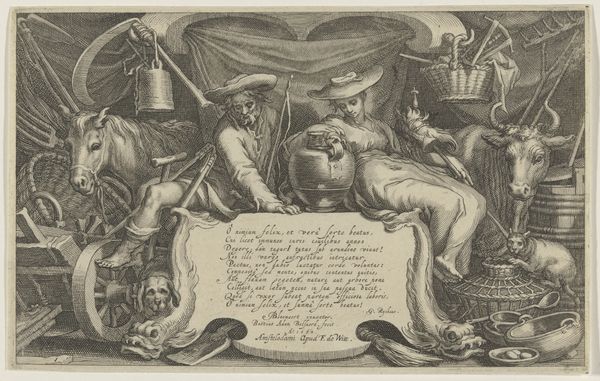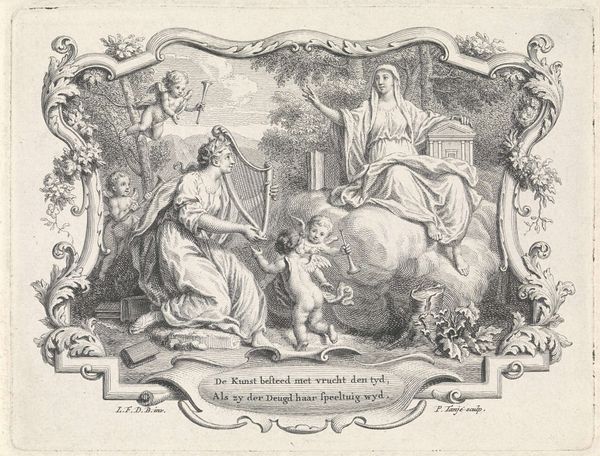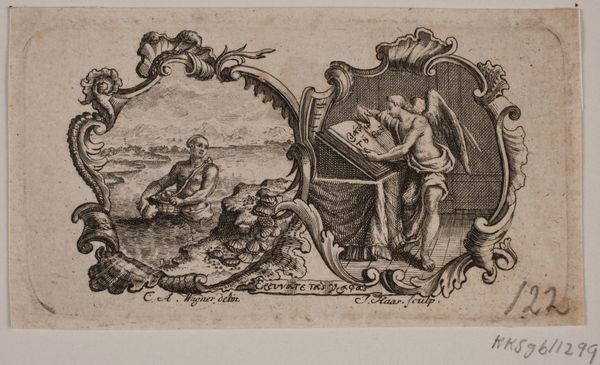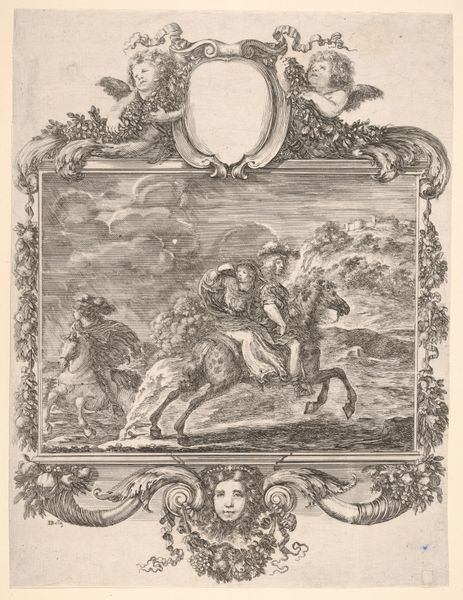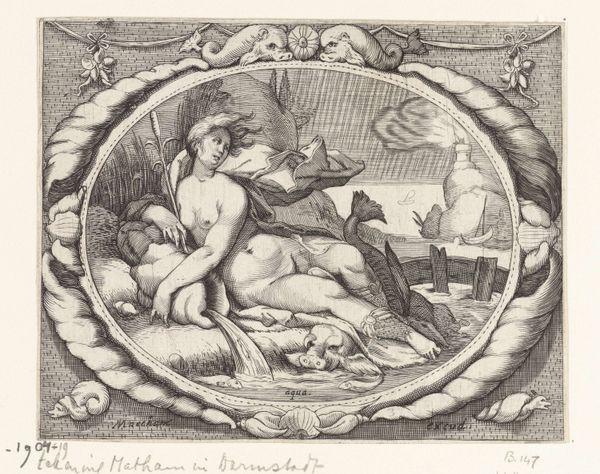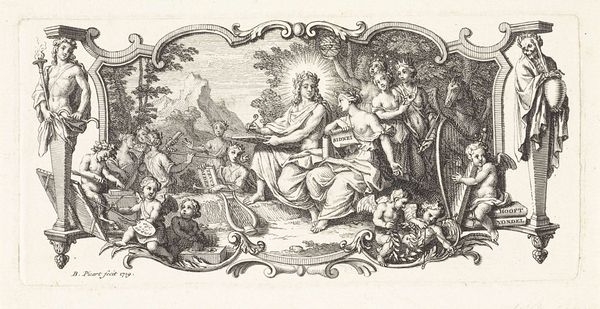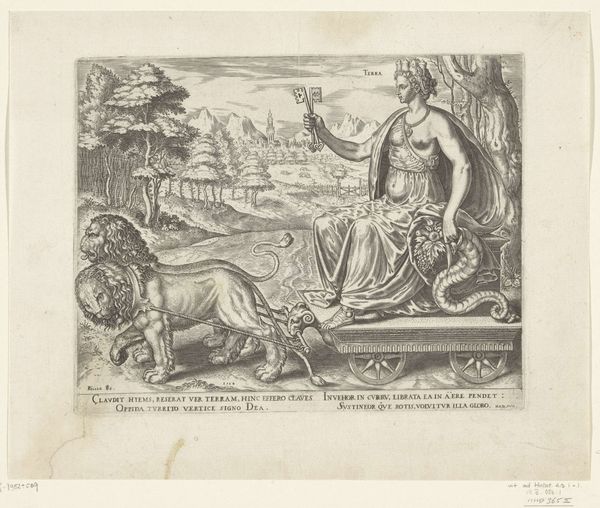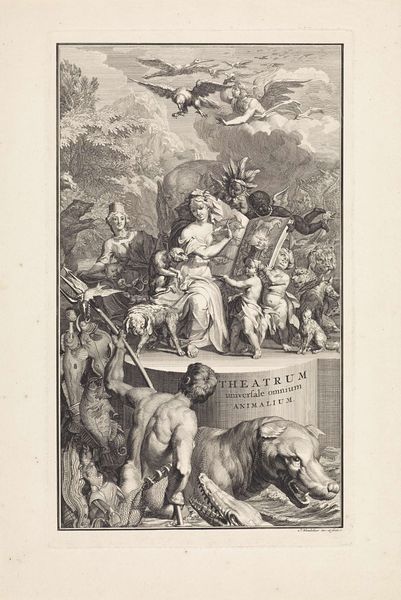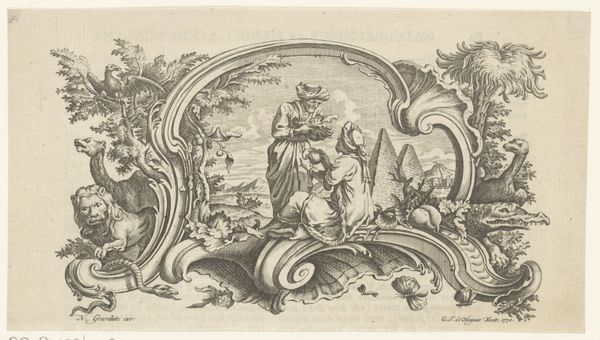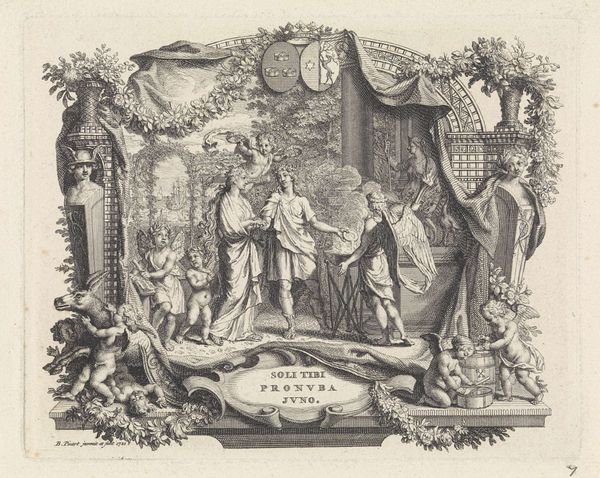
drawing, engraving
#
drawing
#
comic strip sketch
#
allegory
#
baroque
#
mechanical pen drawing
#
pen illustration
#
pen sketch
#
figuration
#
personal sketchbook
#
sketchwork
#
pen-ink sketch
#
line
#
pen work
#
sketchbook drawing
#
storyboard and sketchbook work
#
engraving
Dimensions: height 101 mm, width 131 mm
Copyright: Rijks Museum: Open Domain
Pieter Tanjé created this print, “Dichtkunst en de Tijd,” using engraving, a process demanding meticulous skill. Lines are incised into a metal plate, likely copper, with a tool called a burin. The plate is then inked, and the surface wiped clean, leaving ink only in the incised lines. When pressed against paper, these lines create the image. Look closely, and you can see the distinct character of these lines: sharp, precise, and capable of rendering fine detail. Engraving was a primary method of image reproduction, essential for disseminating information and artistic ideas. The technique has deep roots in both craft and industry, and required long apprenticeships, and intense labor. The engraver's skill was crucial, transforming an artist's design into a reproducible format. Here, Tanjé doesn't just replicate an image; he interprets it through the language of the engraved line, adding to its cultural significance. The print serves as a reminder of how artistic expression is inextricably linked to the materials and processes used to bring it into being.
Comments
No comments
Be the first to comment and join the conversation on the ultimate creative platform.
